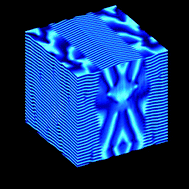The role of viscoelastic contrast in orientation selection of block copolymer lamellar phases under oscillatory shear
Abstract
The mesoscale

* Corresponding authors
a
School of Physics and Astronomy, and Minnesota Supercomputing Institute, University of Minnesota, 116 Church Street S.E., Minneapolis, MN 55455, USA
E-mail:
yoo@physics.umn.edu
Fax: +1-612-624-4578
Tel: +1-612-626-0719
The mesoscale

 Please wait while we load your content...
Something went wrong. Try again?
Please wait while we load your content...
Something went wrong. Try again?
C. Yoo and J. Viñals, Soft Matter, 2013, 9, 7817 DOI: 10.1039/C3SM00099K
To request permission to reproduce material from this article, please go to the Copyright Clearance Center request page.
If you are an author contributing to an RSC publication, you do not need to request permission provided correct acknowledgement is given.
If you are the author of this article, you do not need to request permission to reproduce figures and diagrams provided correct acknowledgement is given. If you want to reproduce the whole article in a third-party publication (excluding your thesis/dissertation for which permission is not required) please go to the Copyright Clearance Center request page.
Read more about how to correctly acknowledge RSC content.
 Fetching data from CrossRef.
Fetching data from CrossRef.
This may take some time to load.
Loading related content
